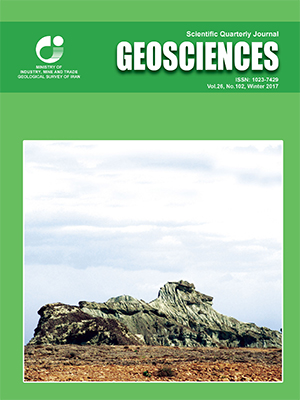Document Type : Original Research Paper
Authors
1 Ph.D. Student, Department of Geology, Faculty of Science, Ferdowsi University of Mashhad, Mashhad, Iran
2 Professor, Department of Geology, Faculty of Science, Ferdowsi University of Mashhad, Mashhad, Iran
3 Associate Professor, Department of Geology, Faculty of Science, Ferdowsi University of Mashhad, Mashhad, Iran
Abstract
The SW Sorkh-Kuh area makes part of the Tertiary volcanic-plutonic rocks in the west of the Lut Block, SW of Birjand city. Geology of this area consists of andesitic and basaltic volcanic rocks intruded by hornblende diorite, hornblende microdiorite, hornblende diorite porphyry, hornblende quartz diorite porphyry and biotite quartz monzonite, which caused extensive alteration and mineralization. The vein mineralization with a NW-SE trend have been observed in the NW portion of the area which is composed of quartz, chalcopyrite, pyrite and Fe-Cu secondary minerals. This vein is the youngest occurrence of mineralization, related to intrusive rocks, in the Lut Block (after Miocene). Primary fluid inclusions of quartz in paragnesis with mineralization, revealed three types of two phases inclusions with difference in density, which liquid rich phases have an average 270 and 330°C of homogenization temperature. Based on freezing studies, calculated temperature of last melting point of these fluids equals to 12-15 and 16-19% wt eq. NaCl, respectively. Some fluids, which homogenized to gas, have more homogenization temperature and salinity. In evaluation of depth, using homogenization temperature, salinity, density and pressure of fluid inclusion, 700 m depth was calculated for mineralization, corresponding to the present erosion surface. δ18O values of quartz in mineralized vein and fluid in equilibrium with quartz have a range between +8.66 – +13.09‰ and +3.06 – +7.59, respectively. It could be inferred that the source of ore-forming fluids was magmatic in the mineralized vein. In general, stable isotope and fluid inclusion studies show similarity of mineralization of the SW Sorkh-Kuh with epithermal deposits in which mineralization is related to the dioritic intrusive rocks. The changes in fluid composition and boiling resulted in mineraliztion along a fault as vein.
Keywords

